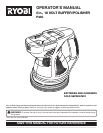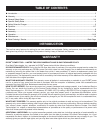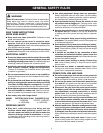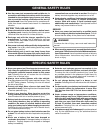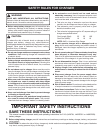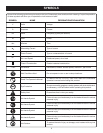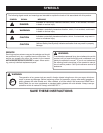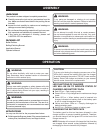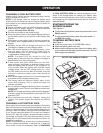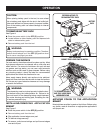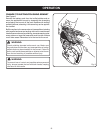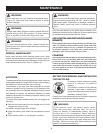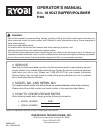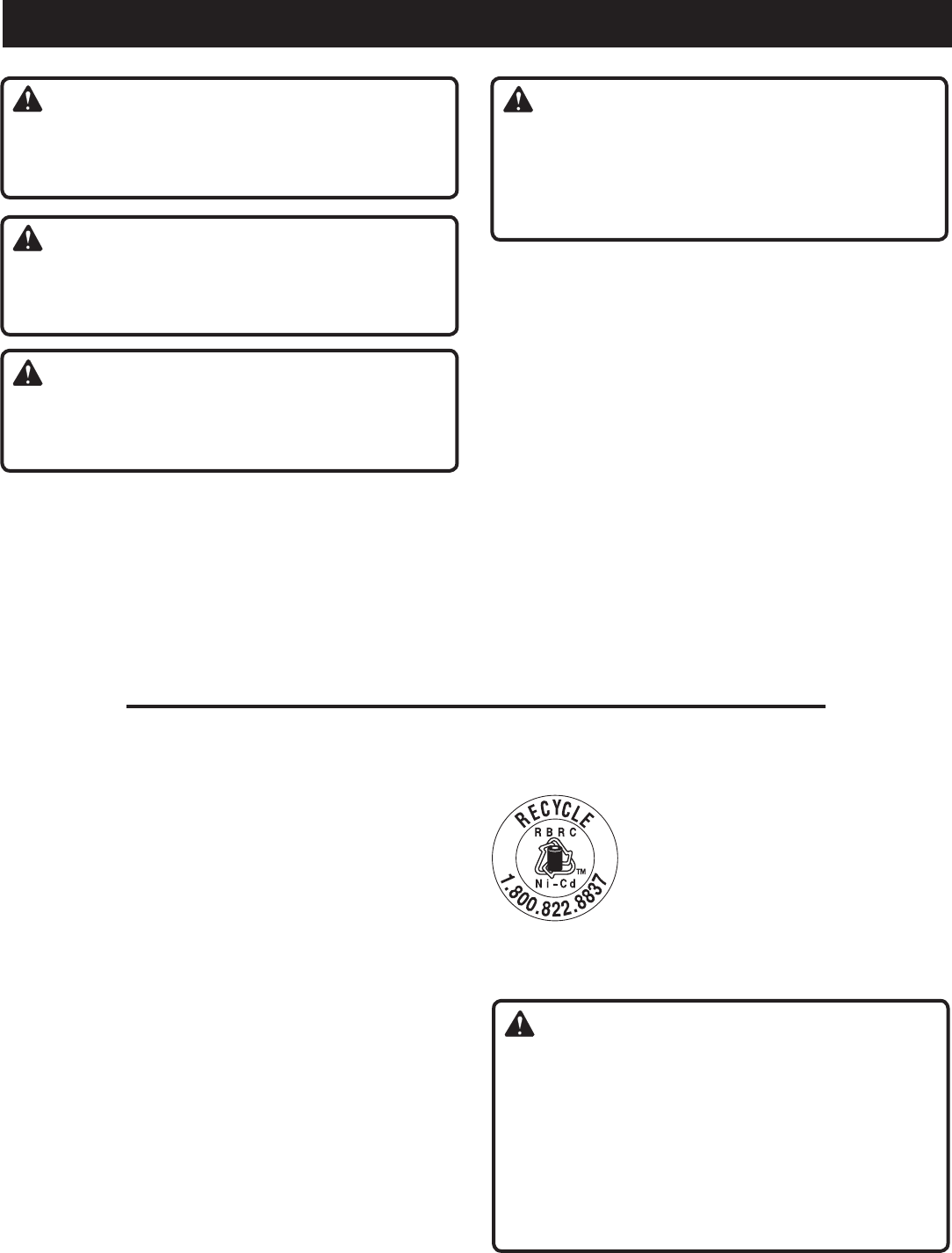
14
MAINTENANCE
WARNING:
When servicing, use only identical replacement parts.
Use of any other parts may create a hazard or cause
product damage.
WARNING:
Always wear safety goggles or safety glasses with side
shields during power tool operation or when blowing
dust. If operation is dusty, also wear a dust mask.
WARNING:
To avoid serious personal injury, always remove the
battery pack from the tool when cleaning or performing
any maintenance.
GENERAL MAINTENANCE
Avoid using solvents when cleaning plastic parts. Most
plastics are susceptible to damage from various types of
commercial solvents and may be damaged by their use. Use
clean cloths to remove dirt, dust, oil, grease, etc.
BATTERIES
The battery pack for this tool is equipped with nickel-cadmium
rechargeable batteries. Length of service from each charging
will depend on the type of work you are doing.
The batteries in this tool have been designed to provide
maximum trouble-free life. However, like all batteries, they
will eventually wear out. Do not disassemble battery pack
and attempt to replace the batteries. Handling of these
batteries, especially when wearing rings and jewelry, could
result in a serious burn.
To obtain the longest possible battery life, we suggest the
following:
Remove the battery pack from the charger once it is fully
charged and ready for use.
For battery storage longer than 30 days:
Store the battery pack where the temperature is below
80°F.
Store battery packs in a “discharged” condition.
BATTERY PACK REMOVAL AND PREPARATION
FOR RECYCLING
To preserve natural resources, please
recycle or dispose of batteries
properly.
This product contains nickel-cadmium
batteries. Local, state or federal laws
may prohibit disposal of nickel-cadmium
batteries in ordinary trash.
Consult your local waste authority for information regarding
available recycling and/or disposal options.
WARNING:
Upon removal, cover the battery pack’s termi-
nals with heavy-duty adhesive tape. Do not at-
tempt to destroy or disassemble battery pack or
remove any of its components. Nickel-cadmium
batteries must be recycled or disposed of properly. Also,
never touch both terminals with metal objects and/or
body parts as short circuit may result. Keep away from
children. Failure to comply with these warnings could
result in fire and/or serious injury.
WARNING:
Do not at any time let brake fluids, gasoline, petroleum-
based products, penetrating oils, etc., come in contact
with plastic parts. Chemicals can damage, weaken or
destroy plastic which may result in serious personal
injury.
Only the parts shown on the parts list are intended to be
repaired or replaced by the customer. All other parts should
be replaced at an Authorized Service Center.
APPLICATION AND BUFFING/POLISHING
BONNETS
Both the application and buffing/polishing bonnets are reus-
able. For maximum life and performance, hand wash after
use and allow them to air dry. If needed, the bonnets can
be machine washed in cold water with a small amount of
detergent, then machine dried using low heat.
FOAM PAD
It is important that the pad retain its original shape and dimen-
sions. Allow it to dry completely after each use. Make sure
to remove the bonnets, wash them, and store separately.
Polisher should be stored with the pad facing up in order to
extend pad life and retain its shape. Be careful not to use
too much polish at one time. If the pad becomes saturated,
it will not last as long.



